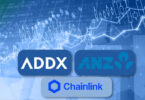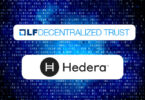Today enterprise blockchain firm SETL announced that it’s open-sourcing its core blockchain, as well as its blockchain interoperability solution PORTL. SETL counts Citibank as a major investor and has several high profile clients. These include Marketnode, the blockchain fixed income solution founded by the Singapore Exchange (SGX) and Temasek, French fund distribution platform IZNES, and commercial paper DLT central depositary ID2S. The latter two have been in production for years.
“We have been working with SETL for several years and are in the process of deploying their solutions within our Securities Services business,” said Joerg Guenther, Global Head of Technology for Citi Securities Services. “We believe that DLT could be transformational for our industry and SETL’s strategy to open source its technology and ensure interoperability is a positive step to enabling scalability of DLT use cases.”
Having kept the solution proprietary for so long, a key question is why open source now? SETL Chief Engineer Anthony Culligan was frank that it was less about developing a community and more because banks want to vet the source code, and being proprietary was holding back adoption.
“When big organizations, banks, choose to integrate blockchain they’re doing something quite fundamental. They’re actually making a change at their core ledger. And often (they change) the way that they do things,” said Culligan. “They were nervous about having a strategic use of a product which they didn’t feel they could see the code.”
The Enterprise version of SETL supports more granular permissions than the open source version. SETL also enables data to be stored in various external key-value databases and the enterprise version provides a particularly fast and large proprietary option.
This is one of SETL’s more general claims – that its blockchain is highly performant and scalable. Like Ripple, Stellar and Bitcoin, SETL supports tokens natively. Most other enterprise blockchains are general purpose and use smart contracts to implement tokens with a performance overhead.
PORTL for blockchain interoperability
Various types of blockchain interoperability solutions are available today. Most are protocols that focus on how to atomically transfer value between blockchains, whereas PORTL’s emphasis is different. One analogy for PORTL is it’s more like providing a single console where an enterprise can orchestrate and monitor its activities across different blockchain networks that use a variety of technologies. Hence the name.
Culligan described PORTL as enabling a “normalized approach to tokens”. It provides a software development kit with six basic token functions, including creating, moving or destroying tokens to work across a variety of ledgers.
For tokens, developers can use these functions to abstract away from specific blockchains. However, in some cases, they may need additional custom code that works on a particular ledger technology. PORTL lets you use that too. Hence it doesn’t restrict the developer in any way.
The supported ledgers include Hyperledger Fabric, Hyperledger Besu (Ethereum), R3’s Corda, DAML and SETL and the various smart contract languages that each one uses.
A neat feature of PORTL is the ability to see the events from multiple blockchains in one unified (Kafka) event stream. For example, in a single stream one could see tokenized stocks transferring on one blockchain and tokenized money transfers on a separate ledger.
Helping innovation teams get their PoCs deployed
In addition to open sourcing its code, SETL also published a blog post, “Top 10 Reasons why Blockchain and DLT projects fail to get into Production.”
Many bank innovation departments develop proofs of concept (PoCs) that never get deployed. Having worked with a variety of institutions, Culligan said he wants to outline what “operations people find difficult in deploying ideas that have come out of their own innovation department.”
As one example, most deployments today use open source software. While an innovation department might happily use the latest hot-off-the-press versions of that software, that comes with massive risks for a bank. Instead, an operations department would have a whitelist of approved modules and versions, and would need to check and verify each one against that list. If the versions are different, that creates a lot of work. But that’s only one of ten reasons that slows down blockchain adoption.
SETL is motivated to list the issues because it believes it has one of the few solutions that is sufficiently scalable for production.
“What’s out there in the market now being used by the innovation guys is not really scalable a lot of the time to the sorts of transaction speeds that are needed in production,” said Culligan.
“And that forms a barrier to getting off the PoC and into production.”






